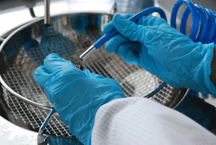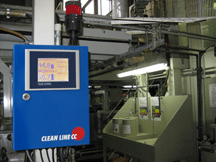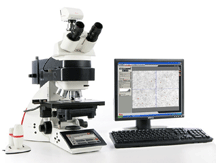


There are costs risks (as well as quality concerns) associated with poor controlled cleaning practices. It is possible, however, to mitigate these risks. Regardless of whether residual particulate contamination on components impairs their function or even causes complete failure—or if film-like residues diminish the quality of downstream processes such as coating, hardening, bonding or welding—the consequences are costly rework, complaints and, in the worst-case scenario, expensive recalls which damage the company’s corporate image.
In order to eliminate this cost risk, more and more companies are specifying component-specific residual contamination limit values, compliance with which has to be monitored and frequently documented. This is associated with stricter cleaning requirements, especially with regard to the quality of the cleaning and rinsing baths.
Take, for example, aqueous cleaning processes. Here, results are influenced decisively by temperature, concentrations of builders and tensides in the cleaning agent and contamination in the baths. On one hand, cleaning agent performance is decreased by carried-over particulate and oily contamination. On the other hand, builders and tensides are depleted to different extents during the cleaning process, which also changes the quality of the cleaning results.
The consequence is often costly and resource-intensive process control:
- In order to be on the safe side, cleaning agent concentrations are significantly higher than required for adequate cleaning in many cases. As a result, cleaning agent is carried over into the rinsing zones, where it’s removed by means of bath maintenance measures.
- Due to the fact that the concentration levels of the cleaning agent’s ingredients and contamination in the baths are often unknown, baths are changed earlier than necessary—either partially or entirely—in order to be on the safe side. In addition to increased consumption of water, chemicals and energy, this results in considerable wastewater reconditioning and disposal costs, as well as reduced availability of the cleaning system.
Overdosing of the cleaning agent and premature bath replacement can be avoided by continuously monitoring cleaning agent and contamination concentrations in the baths and by inspecting part cleanliness. Not infrequently, optimizing runs reveal that specified residual contamination limit values can also be reliably adhered to with lower concentrations of cleaning agent ingredients and/or reduced temperatures.
Measuring systems based on sensors which have been specially developed for cleaning processes are available for determining the contamination load in the cleaning baths. They detect and document the extent to which the bath is contaminated with particulates and oils, and reliably indicate when the bath needs to be changed. Other parameters which are relevant for the process (pressure, temperature, pH value and specific conductance) can also be integrated in order to generate a complete process image.
As an alternative, manufacturers also offer monitoring systems that not only measure bath contamination, but individual concentration levels of builders and tensides as well. The system also documents the results and automatically add ingredients based on consumption.
Detecting Film-Like Residual Contamination. Various test procedures are used in order to determine surface energy (mN/m = milli-Newtons per metre) for the inspection of cleaned parts and surfaces for residual contamination. These include residual oil and grease, as well as finger prints and preservatives—all of which might impair the quality of downstream processes such as coating, painting, bonding, hardening and welding.
These procedures begin with simple test inks. (Test inks are liquids with a specified surface tension which are applied to the surface under test with a brush.) If the brushed-on stripe remains for at least two seconds without shrinking together, the surface energy of the substrate is equal to or greater than the surface tension of the test ink. Beyond this, portable and inline test methods are available as well. This includes contact angle measurement, whereby various characteristics of the surface of the substrate can be determined by a drop of liquid on a solid surface.
Fluorescence measurement. This principle is based on the tendency of organic substances such as oils, greases and waxes to fluoresce when excited by UV light. The thicker the film-like layer, the greater the fluorescence. Calibration is conducted individually with the help of an ideally cleaned surface. In the case of laser-induced, time-integrated fluorescence spectroscopy, excitation is accomplished by means of laser radiation. Even small traces of contamination can be detected using ultra-short light pulses in the nano-second range at a high pulse frequency.
Another concept is based on the relative change in luminance, which results from thin layers on surfaces. A target value is ascertained using a reference surface and is saved to the measuring instrument. Comparative measurements then make it immediately possible to draw conclusions regarding film-like contamination on the surface. Thanks to interchangeable measuring probes, this system can be used for flat surfaces as well as for inspecting the cleanliness of shafts. Furthermore, a flexible measuring probe tip which is connected to the controller allows for inspecting the inside surfaces of drill holes.
Particulate Cleanliness for Specialized Components. More and more companies involved in precision engineering are embracing methods and procedures for extracting and analysing particulate contamination from production and the environment. For instance, in the automotive industry, VDA volume 19, “Technical cleanliness testing–Particulate contamination of function-relevant automobile components,” and its international counterpart, namely ISO 16232, volumes 1 through 10, “Road vehicles – Cleanliness of components of fluid circuits,” are now referred to in supply contracts with regard to particulate cleanliness for the respective components. As a result, the technical cleanliness of a part is rendered objectively assessable and comparable.
One of the essential criteria set forth in VDA 19 stipulates that the required cleanliness value, and its entry to the drawing of the respective part, is always associated with a test specification. This specification includes unequivocal instructions regarding cleaning test parameters and the technique used to measure particulates. It is further stipulated that cleaning test parameters for the respective type of component must be debugged and optimised by means of so-called decay curves, in order to achieve optimum removal of particles without attacking the substance of the part.
Since particles cannot be substantiated directly on the surface of the majority of the components under test due to their geometry, a cleaning step is required that washes particles into a liquid medium. This type of extraction, i.e. removal of particles from the part, is made possible by means of various fluid methods—spraying, ultrasound, rinsing or shaking, for example. The liquid resulting from the extraction process is fed through filtration media, which are subsequently evaluated.
Evaluating the specimen. Various procedures with differing degrees of validity are used to evaluate the specimens. One method is gravimetry, which entails an unused analysis filter that is weighed after filtering the liquid specimen. How it works: differential weight indicates the degree of contamination of the tested components on the basis of the overall weight of the particles rinsed from the parts. Microscopy makes it possible to issue statements regarding particle size and distribution, as well as the largest particle rinsed from the component. It can thus be determined whether or not certain specifications are being adhered to, for example “no particles larger than 400 microns.”
Automated microscopy with image processing examines the analysis filter’s entire surface, defines the particles according to quantity and size, and documents them. This allows the user to draw conclusions regarding potential damage which might be caused by individual particles. Scanning electron microscopes provide information about the size and distribution of detected particles, as well as the chemical elements they contain. This method allows us to draw conclusions regarding the origin of the particles and their potential for causing damage, and makes it possible to examine extremely small particulates. Even more accurate information is furnished by micro-tomographs, by means of which particles can be measured three dimensionally.
The use of fluid particle counters, for example extinction particle counters, eliminates the need for analysis filters which are required for gravimetry and microscopy. As a prerequisite for reliable results, the test fluid may not contain any gas bubbles or droplets of extraneous liquids during measurement.
Inspection systems are available for dry, manual and inline cleanliness inspection that illuminate the surface under test by means of direct sidelighting. Thanks to integrated optical filters, the measuring probe generates very high contrast levels which assure reliable inspection even under difficult conditions, for example in the case of structured surfaces. Representations of orientation, position and the contours of existing particles are displayed live at an integrated monitor screen, and particle quantity and size are ascertained automatically and displayed as well.
ABOUT THE AUTHOR Doris Schulz is the owner of Schulz Presse Text, Korntal Germany. She has studied Business Administration at the Fachhochschule für Wirtschaft, Gestaltung und Technik, Pforzheim, Germany, and has worked with different companies in a public relations capacity. One of her specialties is the field of surface treatment. Schulz can be reached at +49 711 854085 or via e-mail doris.schulz@pressetextschulz.de.





